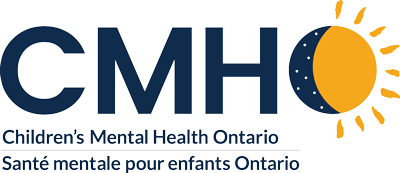Toronto, ON, January 27, 2020:
Children’s Mental Health Ontario (CMHO), representing Ontario’s community public providers of child and youth mental health supporting more than 130,000 children and youth, released new wait time data that shows 28,000 children and youth (under 18) are waiting for mental health and addiction services.
CMHO’s 2020 Report on Wait Lists and Wait Times For Child and Youth Mental Health Care also revealed wide and inequitable gaps in access to child and youth mental health care depending on where you live and what type of service you need. Wait times dramatically differ from region to region. Some children and youth with mental health issues have access to same-day walk-in services, some wait between two and three-months and others wait up to 2.5 years. The children or youth that wait the longest are often those with severe or complex mental health issues requiring intensive treatment programs.
Health care wait times are a key public health issue. When children wait too long for treatment there is a profound impact on families, the broader health care system, hospitals and schools. Treating mental health concerns early results in better outcomes overall for children and families as well as reduced emergency room visits and hospitalizations.
“No child should wait more than 30 days to receive mental health care,” says Kim Moran, CEO of Children’s Mental Health Ontario. “The Ontario government has not kept its promise to invest in community mental health. The federal health accord provides funds to Ontario with the specific intent to support community child and youth mental health. There is $75 million provided to the Government of Ontario by the Federal Government and the province has repeatedly committed to matching those funds. They have yet do so. We are urging that the Ontario 2020 budget include an additional $150 million which is available and tagged specifically for reduction of child and youth mental health wait times.”
CMHO’s report points to many contributing factors for the dramatic rise in children and youth waiting for community mental health care. There has been an almost three-fold increase in the number of youth and caregivers identifying a need for professional help over the last 30 years (OCHS 2014).
Over the past 15 years, CMHO’s centres have worked hard to be as efficient as possible including the establishment of over 80 walk-in clinics across the province, and improvements in intake processes to ensure children and youth with the most acute needs are seen as soon as possible. But, demand has grown at a time when funding has decreased. Funding is also not based on needs. Simply put, there are not enough services and staffing to meet the growing needs of infants, children, youth and families.
Sarah Cannon, mother of two children who have both dealt with significant mental health disorders and who lost her husband and father of her children to mental illness when he died by suicide understands the impact waiting for treatment can have on families. “I have done all I can to access early intervention and treatment programs that would support my youngest child, but again, her condition became so severe she required hospitalization, and has just been discharged after a 43 day stay in hospital.”
Cannon shared her family’s experience and urged MPPs to invest in child and youth mental health services at a Niagara Falls Standing Committee on Finance and Economic Affairs. “In a time where we are trying to end hallway medicine and design health services that wrap around patients in their homes and communities, why do we continue to not adequately fund a system that has the ability to keep children and youth out of hospital and ultimately decrease costs to our health system, and increase the capacity to cope and heal from illness?”
Recommendations for high-quality, accessible child and youth mental health and addictions care for all Ontario families are included in the report and are being submitted by CMHO as part of its 2020 Ontario Pre-Budget Submission.
CMHO recommends an increase funding to community child & youth mental health services by $150 million per year to ensure that no child or young person waits longer than 30 days for mental health treatment. This crucial investment will facilitate the hiring and training of 1,400 front-line professionals and help 30,000 more Ontario families by:
- Ensuring access to counselling and psychotherapy within 30 days
- Expanding intensive child and youth mental health and addiction services for those who need it most
- Scaling 24/7 crisis support services to prevent kids and families from having to go to the emergency department
- Increasing the age of eligibility up to 25 for child and youth mental health programs
Other Key Findings:
Wait lists increasing: In January 2020, 28,000 children and youth (under 18) have been to a community child and youth mental health centre and are waiting for services. Children’s Mental Health Ontario’s previous survey of wait lists and wait times (2017) estimated there were 12,000 children and youth waiting to access services. Wait lists have more than doubled in two years.
Wait times: The longest wait for community mental health child and youth services can reach 919 days or 2.5 years. Additionally, average wait times for counselling and therapy is 67 days and for intensive treatment the average is 92 days. Overall average wait times for counselling and therapy have improved somewhat to 67 days since the average child and youth wait times were reported in the ICES Mental Health of Child and Youth in Ontario 2017 (2015/16) Scorecard when it was 78 days. This is in part due to the opening of walk-in clinics/brief services across the province, which has led to children and youth with mild issues receiving timely services. However, for those with more serious issues, there are wait times for ongoing counselling and therapy, as well as more intensive specialized treatment.
Longest wait times by region for services:
- North – 632 days in Algoma
- Central – 919 days in York
- West – 588 days in Windsor
- Toronto – 684 days in Toronto
- East – 668 days in Peterborough
Children and youth needing help, but not yet on a wait list: CMHO estimates that there are 200,000 more children and youth requiring mental health care that do not make it to the front door of CMHO centres (CMHO 2020). This is calculated based on the Ontario Child Health Study research identifying the percentage of children with mental health issues who are not receiving care under 18 years of age for serious mental health issues.
Inequities exist: Inequities of child and youth mental health care service availability and wait times exist across Ontario. These are based on where you live in the province. In some parts of the province, there are specialized services but they may require more clinical staff to provide high quality services for children, youth and families so waits are long. In other parts, like Northern Ontario, there is virtually no intensive treatment, so kids have to travel to southern Ontario for services. Ultimately families are not able to wait for service if the service doesn’t exist at all.
Additionally, there are significant gaps and lack of culturally competent services including targeted outreach and co-design with priority populations. Previous research shows gaps in services for some populations including Black youth and Indigenous, 2SLGBTQ+, Francophone and immigrant children and youth. Immigrant youth with a mental health disorder are less than half as likely as non-immigrant youth to report having a mental health service contact (OCHS 2014).
For more information, please contact:
Kathleen Powderley, 416-803-5597, kathleen@responsiblecomm.ca


0 Comments